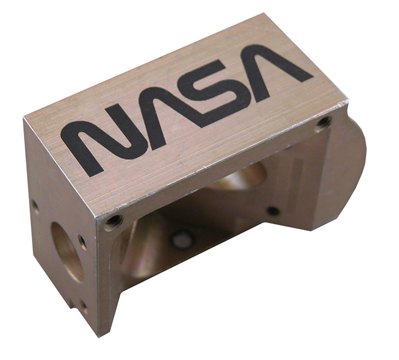The Solutions for NASA and Its MIL-STD-130 Requirements
Similar to other industries, NASA adheres to the standards of MIL-STD-130 and STANAG 2290 to ensure aerospace owned items are properly identified with 2D Data Matrix Identification Symbols through Direct Part Marking (DPM) or compliant tags, nameplates or labels. In order to adhere to the aforementioned standards, NASA requires its contractors to utilize approved marking software and hardware, including dot peen machines, photo stencils, thermal printing materials, ink jet machines, and laser marking systems.
The labels for NASA assets must contain the critical data necessary to provide full-cycle traceability for the span of each item’s life. ID Integration is available to help contractors of this industry determine the best solutions for their unique needs and challenges. As NASA adheres to strict standards, it is crucial that contractors of this industry meet compliance in a timely and cost-efficient manner. The DPM procedures are similar to other industries in the United States, thus contractors may utilize the following products among others to meet compliance with NASA:
✓ Pryor, Telesis and SIC Marking dot peen systems
✓ ID Integration high resolution ink stencil
✓ Epilog CO2 laser systems
✓ Seagull Scientific Bartender Label Design software
✓ Microscan, Cognex and Webscan 2D Data Matrix scanners and verification systems
We are able to help contractors of NASA and other related industries meet compliance as listed in MIL-STD-130 and STANAG 2290. Our unique solutions will meet your individual application requirements.
NASA has done extensive testing of two dimensional Data Matrix marking.
They have published their results in two documents:


